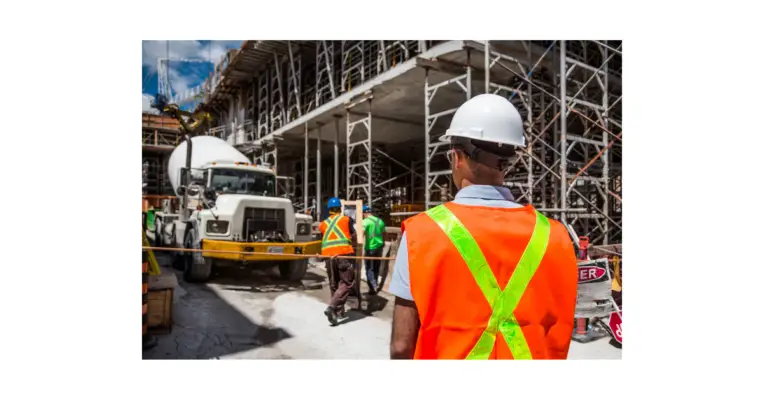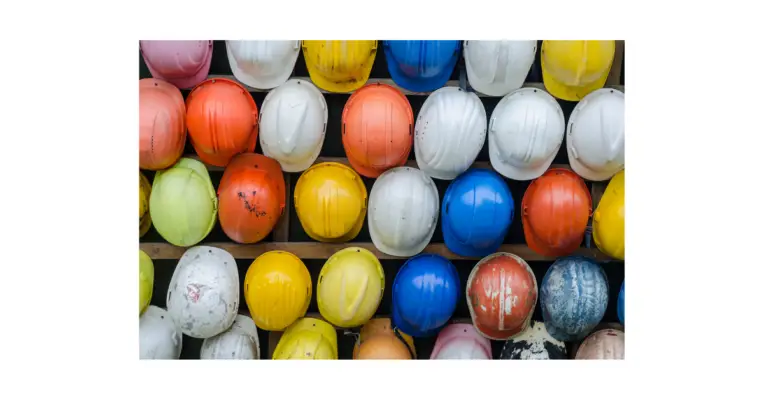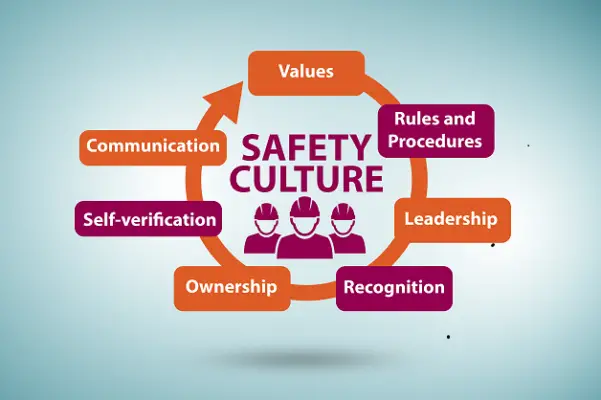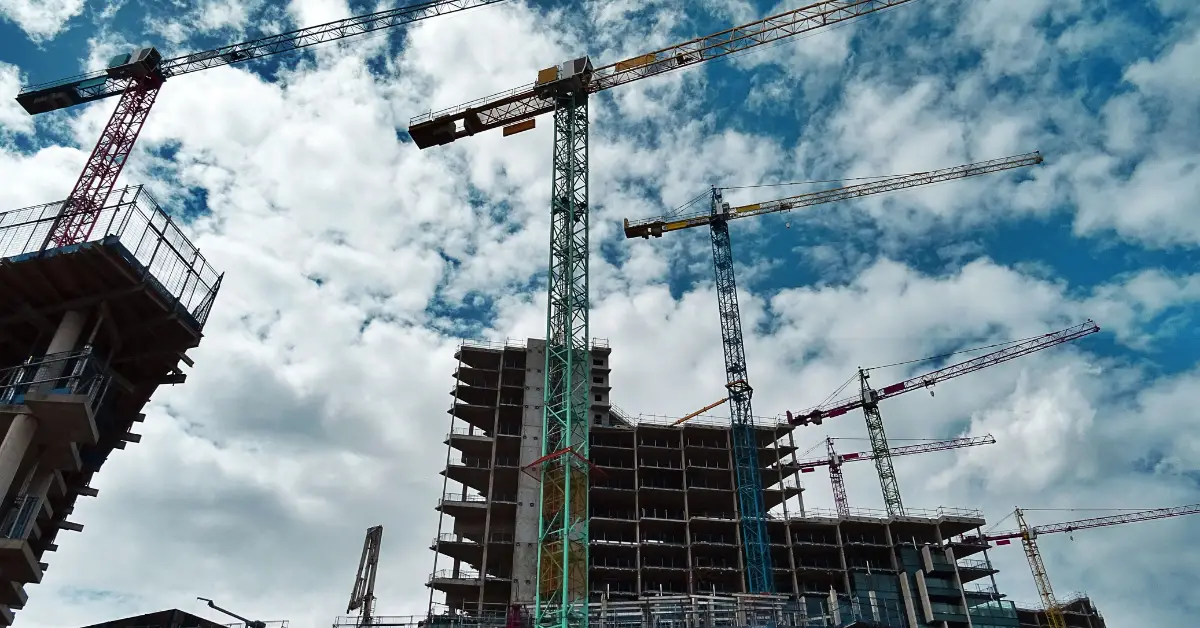Construction risk management is the process of identifying, analyzing, and managing risks that may arise during construction projects. Construction managers must be aware of the potential risks associated with construction projects and take steps to mitigate those risks.
There are a variety of risks that can occur during construction projects, including safety hazards, weather-related delays, equipment failures, and material shortages. Issues of cost variations and unanticipated site conditions can also lead to risks.
There are a number of ways to mitigate construction risks. One way is to develop a risk management plan. This plan should identify the potential risks associated with the project and outline the steps that will be taken The goal of risk management in construction is to minimize the effects of risks on project objectives.
There is nothing as risk-free in construction projects. For example, the company had heavy equipment, the crew working under precarious conditions, and a complex logistical problem. How can a project manager manage deadlines? By using a construction risk management system it is necessary to develop a detailed project plan. How can project managers achieve the best results in construction and its management?
The construction risk management process includes identifying risk factors that contribute to safety risk and project risk of the project. Through the population of a risk management plan and the application of safety risk and project risk controls, safety risks are identified, analyzed, and controlled. The goal of risk management is to reduce or eliminate the potential for loss associated with identified risks.
The construction industry has a long history of using various types of risk management techniques. Some common Risk Management Techniques used in construction include:
- Safety risk management
- Contract risk management
- Claims management
- Delay analysis
Each of these techniques is used to help identify, assess, and control the risks associated with a construction project. By understanding and implementing these techniques, construction professionals can mitigate potential losses and ensure the successful completion of their projects.
The blog post will discuss the fundamentals of each of these risk management techniques.
Construction Project
The need to manage risk is especially difficult for building contractors. A number of possible danger factors must be taken into consideration before, during, or after construction projects. Construction puts an ever-increasing demand on contractors. While there isn’t much time available to create an accurate risk and cost forecast you could decentralize risk management by constructing risk management plans for your projects. A risk management plan will help you to learn how to improve the performance of an organization’s risk management strategy by implementing it correctly.
Construction projects are complex undertakings that involve a variety of risks. These risks can be managed through a risk management plan, which should be developed early in the project planning process. The risk management plan should identify the potential risks associated with the project, as well as the steps that will be taken to mitigate those risks.
In some cases, construction risk management can also involve the purchase of insurance policies to protect against certain types of losses. By taking steps to identify and manage the risks associated with a construction project, developers can help to ensure that the project is completed on time and within budget.

Understanding Risk Management
Construction is a risky sector and managing projects involve managing risk. Construction risk can be defined as any threat that could threaten construction work and create potential losses. Risk plays the key to completing any project from pre-construction to close; the project is completed with reassurance. Construction projects can be complex in every sense and the risks are constant. Various risks may occur throughout the construction cycle.
Depending upon your company’s history you know that construction is an enormous risk. Every project has its own risks and each one varies according to its specific needs. Whether it is planned correctly can damage your project and cause a financial loss. Building risk management is, therefore, an important aspect of every business.
Common risks that need to be managed include health and safety risks, environmental risks, project delivery risks, and commercial risks. By having a clear understanding of these risks and how they can be managed, construction managers can help to ensure the successful completion of their projects.
Construction Risks
There are many types of construction risks, including but not limited to the following:
-Falling debris
-Unstable structures
-Equipment failure
-Fire and explosion
-Chemical hazards
-Manual handling of injuries
There are dangers during the construction process. You must know what is causing your risk when it shows up. A crucial point is the design procedure. Erosion or omission could hit you in the process.
There are also external risks such as handling new stakeholders’ requests for changes. They cause severe damage to the entire building plan’s safety. Once a building has begun the law can be altered and a detailed environmental analysis can still not be completed. You must be vigilant about other crew members.
Construction document formation often involves inconsistent and manual processes that may expose contractors to risks. Every building project has many activities that need attention.
How they document this process can determine if they can complete projects effectively. Every detail is documented, whether it is a daily log or weekly e-commerce. This applies especially to anything that could be construed as meaning contract changes.
Risk management along with construction is considered a critical part of any construction project. There is no guarantee of a positive outcome to the investment. Positive risks are incurred when one accepts a new project. If the management plan is well implemented, the organization can not only protect against disaster but can also exploit potential business opportunities.
What is Construction Risk Management?
Construction risk management describes the assessment and implementation of procedures in the construction industry aimed at minimizing risk in projects. Essentially, the risk management process is designed to help project managers identify risk in their projects and mitigate the consequences of these actions.
Project management programs are very easy to implement by following a risk management process. Project managers can create risk management plans using the full Gantt diagram, and monitor projects with real-time reports and charts.
The aim of construction risk management is to minimize the potential for losses and maximize the potential for profits. It is an essential part of any construction project and should be considered at all stages of the project lifecycle.
A comprehensive risk management plan will identify the risks associated with a project and put in place measures to mitigate those risks. Doing so will help to ensure that a project is delivered on time, within budget, and to the required standard.
Quantitative Elements of a Construction Risk Management Plan
When qualitative risk assessment is performed and recorded, the risk is assigned numerically and the risk is assessed numerically. In quantitative risk management, the effects of risk on projects are analyzed numerically. The data are used in estimating the costs of the work and its time of construction.
The risk assessment quantitatively aims to achieve objective results. Risk A could occur based upon quantifiable data such as fluctuated resources cost, average completion of the activity, logistics, and much more. This risk has the possibility of X days delay x 15%
In risk analysis, the methods can be compared qualitatively and quantitatively. Its main difference from other methodologies is a quantitative analysis of quantities that can be measured in numbers. The qualitative analysis focuses upon factors that are observed without being measured.
Qualitative risk analysis can occur across all aspects of projects. This enables the analysis and assessment of the potential risk event occurring in a project’s lifecycle, as well as the potential impact of that event on the project plan. Qualitative risk studies are generally more objective.
How Project Manager can Help you Mitigate Risk?
Building risk management is complicated. You have to have the right software to manage your project in a way that provides accurate and measurable information. Project Manager is a cloud-based tool that provides real-time information about building risks to the project team and its employees.
As a project manager, one of your primary responsibilities is to identify and mitigate risks. By taking a proactive approach to risk management, you can help protect your project from potential problems.
There are many different ways to mitigate risk, but some of the most effective methods include developing a risk management plan, conducting regular risk assessments, and collaborating with other members of the project team. By taking these steps, you can create a safer work environment and ensure that your project stays on track.
Tell me the Type of Risk associated with Construction Projects?
Risks usually include anything that can delay a project, increase cost, or create additional risks. The risks associated with construction sites are many. The key to creating an effective risk management system should include knowing the risks, and when and why they happen.
Construction projects are associated with a variety of risks, including the risk of injury, the risk of property damage, and the risk of delays. Injuries are a common occurrence in construction, and they can range from minor cuts and bruises to more serious injuries such as broken bones and concussions.
Property damage is also a common risk in construction, as buildings and equipment can be damaged by weather, fire, accidents, and vandalism. Delays are another common risk in construction, as projects can be delayed by a variety of factors such as bad weather, material shortages, labor shortages, and government regulations. All of these risks must be carefully managed in order to ensure the success of a construction project.
Project risk
Project risks include all factors affecting the efficient management of construction projects. Delays management issues and conflicting teamwork can cause significant delays on a project. According to a report by Dodge Data Analytics, the risk area remains challenging for contractors as 66% reported challenges relating to project risk management. Project risks can lead to poor results in costly delays, decreased productivity, and occasionally project failures.
Contractual/legal risk
The risk area includes potentially litigious situations that occur when clients are completing their contractual obligations. Legal risks can arise if project deliveries and payment delays occur. Claims may arise because the contract was signed without details or because it was not possible to determine accountability for delays or quality concerns. These risks could delay projects or cause higher costs.
Financial risk
Anything that affects the finances of the construction industry. Construction risk includes costs overruns, waste materials change orders, late payment on client payments, and higher cost materials. These risks can create cash flow issues which can stop or delay project execution, and potentially create litigation. Financial risk is caused mainly by a lack of planned and coordinated action.
Safety risks
The construction environment poses significant risks to workers. Safety risks could include accidents, deaths, illness, and injuries. Safety is a major risk factor for contractors, and injuries are rising. Occupational accidents – fatalities from construction and extraction work – increased by 6% from 2017 to 2018 to 066 in 2019.
Environmental risks
Inclement weather conditions and nature events pose a constant threat to the building industry as a whole. Environment risk is a combination of earthquakes and floods that causes loss and damage to buildings and reduces the accessibility and progress of the project.
Weather change can also cause environmental damage and disrupt construction materials and equipment, disrupt the operation, and cause delays. Risk management is an important operational process throughout virtually everything but is especially crucial for the construction industry.
The Risk Management Process
When it comes to construction there’s nothing different than mitigation risk. This difference only exists in how risky it may sound to you as an entrepreneur. What is a risk control process? It’s a process that helps you to identify, assess and control risks. So what does this entail?
The first step is identification. This is where you determine what could happen that would negatively impact a Construction project. This is done by looking at all aspects of the project and brainstorming different ways things could go wrong.
The next step is assessment. This is where you rank the identified risks in terms of how likely they are to happen and how severe the consequences would be if they did.
The last step is controlled. This is where you put together a plan to eliminate or mitigate the risks. This may involve changes to the project design, additional safety precautions, insurance, or other measures.
The risk management process is an important part of any construction project. By identifying and assessing risks early on, you can put together a plan to avoid or mitigate them.
Benefits of Risk Management in Construction
Clearly, a risk management plan can give you a lot of confidence. Although developing plans takes time and effort, effective risk management can provide valuable benefits to your business.
A risk management plan combines quantitative and qualitative elements to help companies understand and control risks and improve their performance. The risk management strategy is a critical component in a successful project’s completion. It is therefore valuable for any construction organization.
Enhanced security
Risk management strategy helps teams comply with the strictest safety and security requirements at building sites. The potential for safety hazards can be minimized, accelerating the development.
A sound risk management program is important for any construction firm. By identifying potential risks and implementing controls, construction firms can help to ensure the safety of their workers, the quality of their projects, and the financial health of their business. Perhaps most importantly, a well-run risk management program can help to enhance security.
By identifying potential security risks and implementing controls, construction firms can help to protect their workers, their projects, and their business from potential harm. In today’s world, enhanced security is more important than ever before. A sound risk management program is an essential part of any construction firm’s operation.

Streamlined operations
Once you create a risk control strategy, you can easily assess your project’s potential risks. Team members possess knowledge and tools that can help improve business effectiveness. By taking a proactive approach to managing risks, construction firms can streamline their operations and avoid costly delays or disruptions.
An effective risk control strategy helps construction firms avoid potential project delays and disruptions by:
- Evaluating the potential risks of a project during the planning stage.
- Identifying possible risk mitigation measures.
- Communicating the risks and mitigation measures to all relevant parties.
- Monitoring the project throughout its duration to identify any new or evolving.
Higher confidence in projects
A well-designed plan helps a project gain confidence as it focuses on managing risk over time. Because teams can plan and correct errors, they can save time and money.
By taking a proactive approach to risk management, construction companies can achieve a number of benefits, including increased confidence in the successful completion of projects. By identifying potential risks early on, construction companies can make changes to their plans and procedures to avoid these risks.
In addition, by establishing guidelines for risk management, construction companies can create a culture of safety that will protect workers and reduce the likelihood of accidents. Ultimately, by implementing an effective risk management plan, construction companies can increase their chances of completing projects on time and within budget.
How to Manage Risks?
For effective risk management, you must create and implement a risk-based program.
Prioritize Risks in order of importance
Construction risks can vary if you are in the construction industry and one could impact another business without worrying about your own business. After assessing the risk, evaluate the probability of it becoming a reality.
Use dollar figures and percentage numbers to determine risk. In the first place, the most significant risk of the highest potential is taken whereas the most serious risk of lower risk is analyzed.
In some circumstances, a price rise in the materials you need for a particular job can impact your profits. Natural disasters are highly impactful with low likelihood.

Identify the risks
Now you understand typical construction project risks and can identify those specific to your project. In determining the risk, it would help in managing the possibility of risks before they could arise in its implementation, a pre-construction period would be the preferred time to take the risk assessment seriously.
How do you evaluate risk? This will determine what scenarios could affect the project. The brainstorming sessions will give each team the opportunity to share its expertise. Past projects provide useful references, as well as a good guide for understanding scopes and places.
Create Contingencies & Revise
When you take risks, you should consider creating an alternative plan — an alternative option for finishing a project without taking risks. Generally, a business that accepts projects that provide a substantial level of security hazards must communicate these risks with employees.
The contingencies will include a checklist of chemicals to label containers and software for workers to check off safety measures. Risk management can be confined by implementing certain rules. Constant monitoring and revision of an organization’s plan increase its resilience to any potential risks.
Execute a Risk Management Plan
After performing the risk assessment, you’re ready for a risk assessment and plan. Risk plans optimize your risk response strategy by providing critical data and solutions to mitigate, mitigate and manage risks.
A successful plan includes a detailed list of resources for each of your defined risks. Risks can affect different departments and industries. In addition to maximizing your business’ ability to manage threats, you can use other resources for the same tasks and complexities.
Involve members of the team
Construction risk management cannot be an isolated activity that relies solely on the participation of your major partners. Updates about risks should occur at every level. The major parties involved are the owner team, design team, or contractors. Since each company uses its own procedures, it is important to examine its processes and determine if it can eliminate any potential risks. A number of stakeholders also play significant roles in risk mitigation.
Determine your risk response strategy
After evaluating your risk, you can then determine how you should approach each hazard. While risks can be complex, they do fall into four main categories: the responses you use depend mainly on how well you are prepared. You can find that you can get a higher reward if you gain loyal customers or break into an unfamiliar market.
Technology for Contractors
For contractors, technology can be a powerful tool to help streamline operations and improve efficiency. Mobile apps, for example, can allow contractors to manage their projects on the go, keeping track of deadlines, budget constraints, and materials lists.
Online project management tools can also help contractors to collaborate with other team members, sharing documents and files in a secure environment. In addition to project management tools, there are also a number of construction-specific software programs that can help contractors with everything from estimating materials costs to creating 3D models of their projects.
By leveraging the power of technology, contractors can gain a competitive edge and deliver superior results to their clients.
Information silos
Often integrating data into projects creates information isolation and blocks information, causing poor visibility for the project teams and the productivity of staff. The distributed nature of construction projects often creates fragmented information, which causes mistakes and inefficiency that can be devastating.
The Construction Industry Institute estimates that there is about 10 percent of projects have been rated high risk over their lifetime.
Poor document tracking
Poor document tracking results in excessive time spent searching through filing cabinets for the information and missing information. Despite the clarity in documentation, communication is reduced as the risk increases.
Imagine the possibility of hundreds of change order orders for each construction project adding hundreds of pages of contracts. A good documentation system will reduce miscommunication and arguments resulting in delayed work and delays in development.
Schedule risk assessment
Schedule risks are created when the construction schedule is a failure, neglecting factors like the operation and project restrictions. Miscommunication in scheduling may result in an unplanned day, week, or month that could significantly impact construction projects’ budgets and cost of construction.
Assess exposure to risk
Currently, the Construction Industry Institute (CII) has identified project risk assessments as the process used for identifying risk and management and it is an effective tool for determining extent. The risks associated with the development.
What are the Five 5 Categories of Risk Construction?
Construction risks. Safety hazards that result in workplace injury and fatality. How can I handle changes? A complete drawing with no scope. No Known Conditions of Use. Poor contract writing. Unanticipated expenses. Deficiencies in the workforce. Deterioration of equipment and stealing.
Conclusion
As can be seen from the above discussion, construction risk management is a complex and vital process. By understanding the nature of risks and identifying potential sources of problems, construction projects can be completed on time, within budget, and with a minimum of surprises. While there is no guarantee that all risks can be averted, a well-developed risk management plan can go a long way towards ensuring the success of a construction project.

Chris Ekai is a Risk Management expert with over 10 years of experience in the field. He has a Master’s(MSc) degree in Risk Management from University of Portsmouth and is a CPA and Finance professional. He currently works as a Content Manager at Risk Publishing, writing about Enterprise Risk Management, Business Continuity Management and Project Management.

